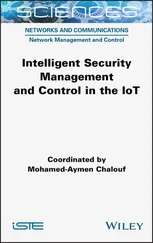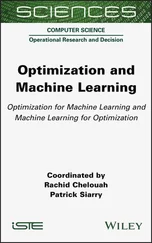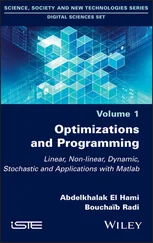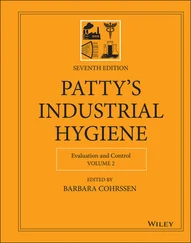Efstratios N. Pistikopoulos - Multi-parametric Optimization and Control
Здесь есть возможность читать онлайн «Efstratios N. Pistikopoulos - Multi-parametric Optimization and Control» — ознакомительный отрывок электронной книги совершенно бесплатно, а после прочтения отрывка купить полную версию. В некоторых случаях можно слушать аудио, скачать через торрент в формате fb2 и присутствует краткое содержание. Жанр: unrecognised, на английском языке. Описание произведения, (предисловие) а так же отзывы посетителей доступны на портале библиотеки ЛибКат.
- Название:Multi-parametric Optimization and Control
- Автор:
- Жанр:
- Год:неизвестен
- ISBN:нет данных
- Рейтинг книги:5 / 5. Голосов: 1
-
Избранное:Добавить в избранное
- Отзывы:
-
Ваша оценка:
Multi-parametric Optimization and Control: краткое содержание, описание и аннотация
Предлагаем к чтению аннотацию, описание, краткое содержание или предисловие (зависит от того, что написал сам автор книги «Multi-parametric Optimization and Control»). Если вы не нашли необходимую информацию о книге — напишите в комментариях, мы постараемся отыскать её.
ecent developments in multi-parametric optimization and control
Multi-Parametric Optimization and Control Researchers and practitioners can use the book as reference. It is also suitable as a primary or a supplementary textbook. Each chapter looks at the theories related to a topic along with a relevant case study. Topic complexity increases gradually as readers progress through the chapters. The first part of the book presents an overview of the state-of-the-art multi-parametric optimization theory and algorithms in multi-parametric programming. The second examines the connection between multi-parametric programming and model-predictive control—from the linear quadratic regulator over hybrid systems to periodic systems and robust control.
The third part of the book addresses multi-parametric optimization in process systems engineering. A step-by-step procedure is introduced for embedding the programming within the system engineering, which leads the reader into the topic of the PAROC framework and software platform. PAROC is an integrated framework and platform for the optimization and advanced model-based control of process systems.
Uses case studies to illustrate real-world applications for a better understanding of the concepts presented Covers the fundamentals of optimization and model predictive control Provides information on key topics, such as the basic sensitivity theorem, linear programming, quadratic programming, mixed-integer linear programming, optimal control of continuous systems, and multi-parametric optimal control An appendix summarizes the history of multi-parametric optimization algorithms. It also covers the use of the parametric optimization toolbox (POP), which is comprehensive software for efficiently solving multi-parametric programming problems.
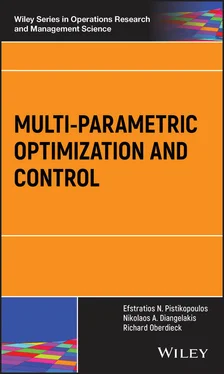
 to the objective function of an LP problem without influencing the optimal solution. Similarly, it is possible to add an arbitrary scaling function
to the objective function of an LP problem without influencing the optimal solution. Similarly, it is possible to add an arbitrary scaling function  to an mp‐LP problem without influencing the optimal solution.
to an mp‐LP problem without influencing the optimal solution.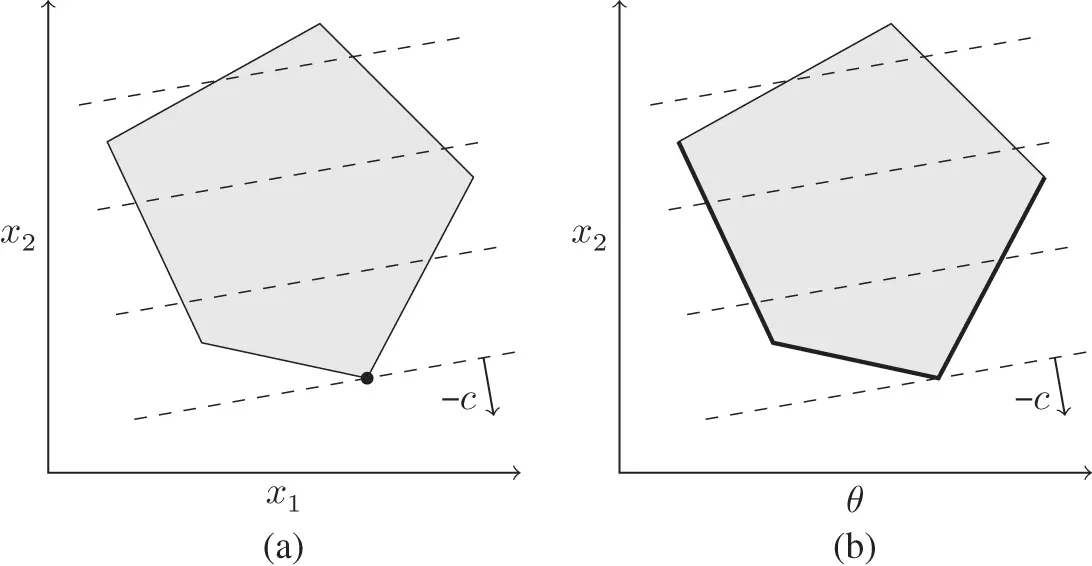
 as a parameter. In (a), the solution is a single point in one of the vertices of the feasible space, while in (b) the solution is a function of the parameter
as a parameter. In (a), the solution is a single point in one of the vertices of the feasible space, while in (b) the solution is a function of the parameter  .
.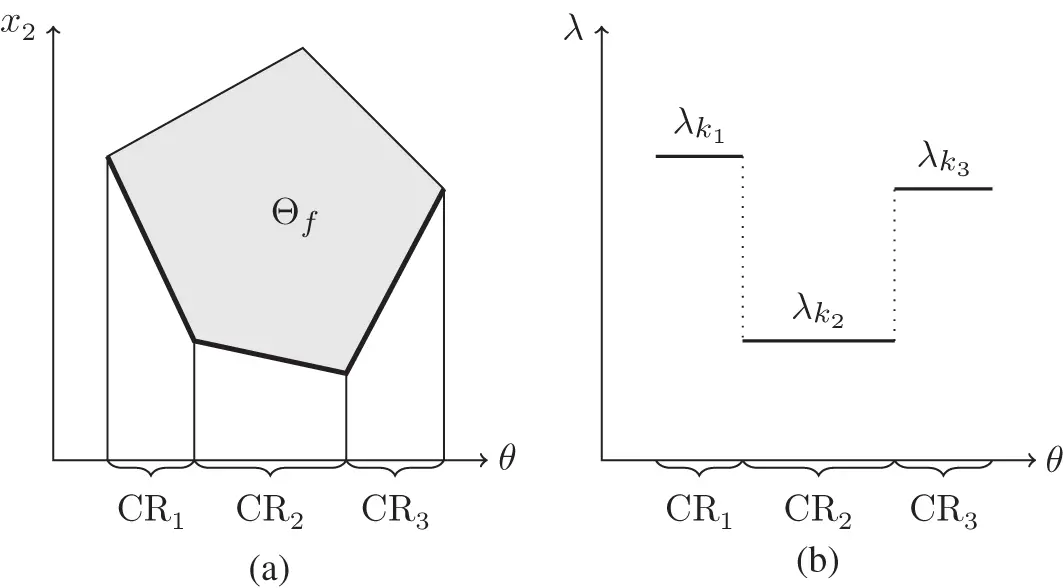
 , as well as the piecewise affine nature of the optimal solution
, as well as the piecewise affine nature of the optimal solution  and the convex and piecewise affine nature of the objective function
and the convex and piecewise affine nature of the objective function  is shown. In (b), the Lagrange multipliers
is shown. In (b), the Lagrange multipliers  as a function of
as a function of  are shown.
are shown. , which transforms the mp‐LP problem ( 2.2) into an LP problem of type ( 2.1). The solution of this LP problem at
, which transforms the mp‐LP problem ( 2.2) into an LP problem of type ( 2.1). The solution of this LP problem at  yields the solution
yields the solution  as well as the values of the Lagrange multipliers
as well as the values of the Lagrange multipliers  . Based on these, the indices of the active set
. Based on these, the indices of the active set  are identified:
are identified:

 from Eq. (2.3) is not unique, the solution is said to be degenerate. The impact of degeneracy on the parametric solution is discussed in Chapter 2.2.
from Eq. (2.3) is not unique, the solution is said to be degenerate. The impact of degeneracy on the parametric solution is discussed in Chapter 2.2. , the following active set matrices and vectors are defined:
, the following active set matrices and vectors are defined:


 has to have full rank in order to fulfill the LICQ condition described in Chapter 1. Since the objective function is linear and the constraints are affine, the change of the solution of problem ( 2.2) based on the basic sensitivity theorem is given by 2:
has to have full rank in order to fulfill the LICQ condition described in Chapter 1. Since the objective function is linear and the constraints are affine, the change of the solution of problem ( 2.2) based on the basic sensitivity theorem is given by 2:


 can be made:
can be made: is given by Eq. (2.5) and is valid in the compact polytope described by Eq. (2.6), which is referred to as critical region :
is given by Eq. (2.5) and is valid in the compact polytope described by Eq. (2.6), which is referred to as critical region :
